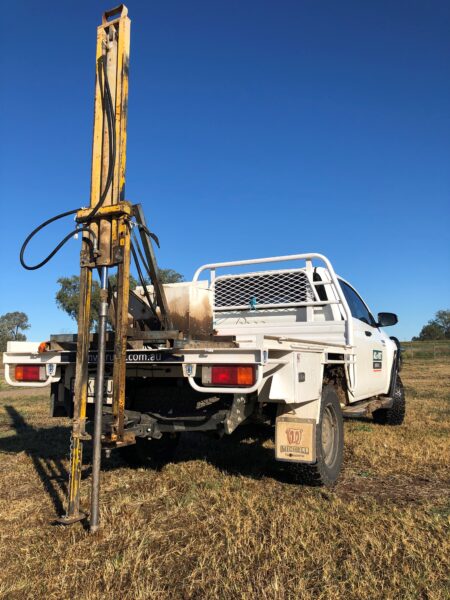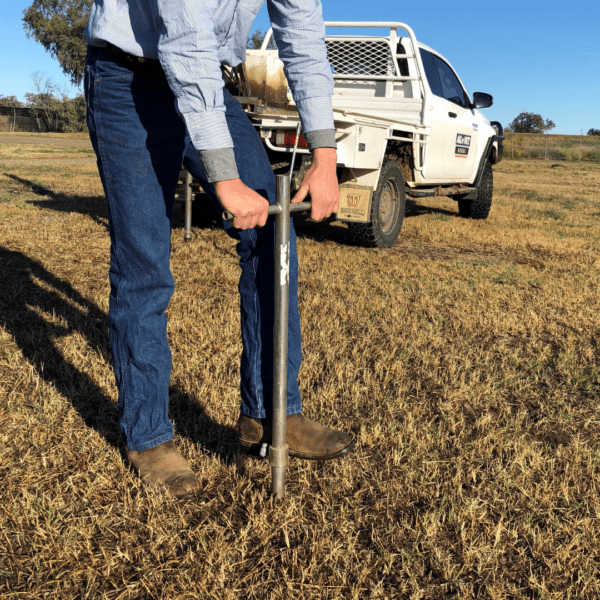The Benefits of Soil Testing
July 2, 2021 All Regions

Photo: Deep soil tests using a vehicle mounted soil tester give you a profile soil sample. Splitting up these sample into segments and testing separately give you the best indication and location of the soil nutrients and constraints.
No one questions the need to prepare paddocks for sowing the next crop or pasture. Within this preparation process, there is often an oversight in the area of soil testing.
When planning a new pasture or crop, the focus of discussion is often on the relative performance between different seed options for sowing, including; feed quality, yield potential, or persistence. However, without a soil test at an appropriate depth, you don’t know the fertility of your soil and this has a major influence on whether a species is suited to the paddock and how the pasture or crop will perform.
Soil testing allows you to accurately predict the fertiliser needs of the paddock. In some cases, the test will reveal that there is sufficient nitrogen available for the needs of intended crop, so the saving in fertiliser cost easily outweighs the cost of the test. In other cases, it will identify deficiencies in the soil, allowing you to apply the correct fertiliser and rate to ensure the best economic return from the crop.
Deep soil testing can also measure the changing pH down the profile, changes in subsoil texture, and sub soil chemistry that could potentially be hostile to plant roots. This is particularly important for crops with deep root systems (e.g. lucerne, wheat, sorghum). Requesting additional specific add-ons to a basic soil tests, such as exchangeable cations extraction, will give you values for the elements important for the crop you will grow, without the expense of a full-range test.
The value of deep soil testing is diminished if it only gives you a partial picture of where the nutrients are in the profile. My experience is that the deeper subsurface samples to 60 or 90 cm should be segmented with both a surface test and then subsequent tests from segments lower in the profile. A single 0-60cm test does not consider variation down the profile, especially when considering nitrogen, sulphur, sodium and aluminium. My preference for sampling is a test of 0-10 cm and 10-60 cm. If possible, a fourway split of 0-10, 10-30, 30-60, and 60-90 cm can give you a better picture of the soil profile in terms of soil texture and soil chemistry.
Soil testing should consider the effective rooting depth. Soil structure may mean you need to modify the depth segments you can test. A 10cm test may be the effective limit if there is rock or gravel in the surface layer. Also, if the soil is very deep and roots are expected to grow deeper than 90 cm, consider tests in the 90-120 cm zone if possible. For shallowrooted species like perennial ryegrass and white clover, deep soil testing is not necessary, with 0-20 cm being adequate.

Photo: Shallow soil tests (0-10cm) are the most common testing done. These only give you a snapshot of the surface but don’t give a true indication of your soil profile
It is important to determine nitrogen levels when considering spring/summer forage such as a brassica, millet, or forage sorghum with nitrate levels in the plant an important stock health consideration. On more than one occasion strategic deep soil testing has led to a complete reversal of the intended sowing plan, with changes in species mix due to high aluminum levels or sodic subsoil making the initial selections likely to under-perform or pasture species not to persist.
If you don’t have a comprehensive soil testing program in place, there are qualified and accredited agronomic advisers performing testing services. For any queries, please don’t hesitate to contact me, or talk to your S&W territory manager.
By Shane Kable (Technical Services Territory Manager Hunter Valley & North West NSW)